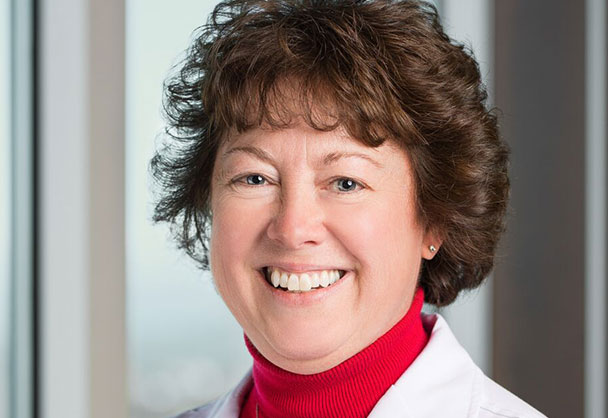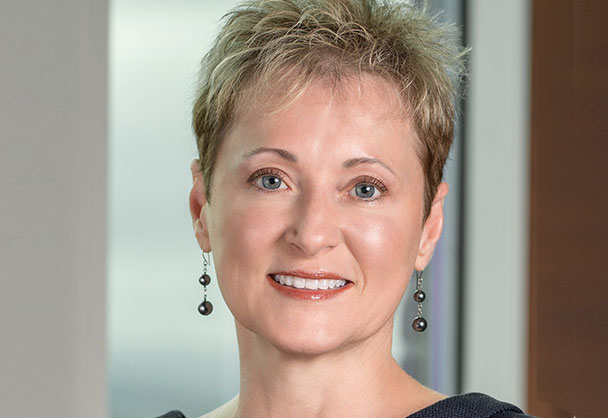Facing the Looming Nursing Shortage Head-on
Podcast Episode 20
Introduction
Because of high demand and limited supply, there is a nursing shortage in the United States. COVID-19 has reminded us of the importance of nurses in our lives and why we must invest in them. Learn from prominent healthcare experts how to limit the impact of nursing shortages by leveraging intelligent infrastructure, automation, and data intelligence.

Lisa Smithgall
Senior Vice President and Chief Nursing Executive, Ballad Health

Trish Tanner
Vice President and Chief Pharmacy Officer, Ballad Health
Episode Highlights
Q: Please tell me about Ballad Health and the areas it serves? Also, what measures have you taken to manage nursing shortages in your healthcare system?
Lisa Smithgall: Ballad Health is an integrated community health improvement organization serving 29 counties of the Appalachian Highlands in Northeast Tennessee, Southwest Virginia, Northwest North Carolina, and Southeast Kentucky.
Some of our facilities are in remote regions, resulting in a serious nursing shortage for our region because rural health areas across the country are being impacted more in the recruiting and retaining of personnel, particularly in a mobile society.
Working in a hospital may be very difficult. Although Ballad health has addressed the nursing labor shortage, we're still affected by it like many other healthcare systems. We've looked at flexible jobs and set objectives to bring retired nurses back into the workforce. We've developed positions that appeal to nurses who may have childcare difficulties and want to be able to care for their children while working part-time.
Technologies like an intelligent infrastructure and automation can help alleviate staff shortages, especially for nurses. Nurses may use a virtual option to admit patients into the electronic health record, in which a camera and mobile card are placed in the patient's room. The nurse communicates with the patient and collects all admission data and paperwork. This information about medication history is also recorded. For our nursing staff members, it's been a great tool for decreasing paperwork and maximizing efficiency — especially when giving medication. It also aids on-site patient care providers save up to 36 minutes per client, allowing them to focus on other higher-value direct patient care.
Q: Could you explain why there is a lack of healthcare providers today, which leads to difficulties with care?
Trish Tanner: The number one issue facing businesses today is employee turnover, which is severely impacted by healthcare. Everyone listening to today's broadcast is probably aware of this, but the staffing shortages are nothing new. However, the combination of pandemic burnout and other job pressures contributes to an increase in employee turnover.
Now, it's not a financial performance that worries our hospital CEOs; instead, it's labor shortages. CEOs predict that the consequences of labor shortages will be far-reaching, including lower quality patient care, greater workloads for remaining employees, slower medication delivery, and more errors. Last but not least is the ever-increasing operational cost.
Q: McKinsey's research revealed that nurses are leaving the labor market in significantly greater numbers than they did ten years ago. Lisa, as Ballad Health's Chief Nursing Executive, how have you and your team been dealing with the nursing shortage head-on?
Lisa Smithgall: We've implemented a lot of communication with our nursing teams at Ballad Health to learn about their demands on the job and how we can make the work they do more meaningful and enjoyable. Nursing departments throughout the United States are now using flexed or stretched ratios due to a lack of the essential quantity of resources. We've done much research to help nurses with restricted ratios fulfill their patient care service obligations without detracting from the care they can only provide at their license level.
We've worked with our regional academic institutions to identify unlicensed flex opportunities for students across all clinical academic education application stages. When I say that, I'm talking about medical, pharmacy, nursing, and respiratory therapy students enrolled in a clinical program.
Unfortunately, with the growing number of baby boomer nurses retiring, no more than 990,000 nurses will retire by 2030. Beyond nursing licenses for new nurses, the number of graduates is only increasing by 4 percent. This is due to various reasons, including hospitals having available nursing jobs and our academic nursing programs across the United States facing faculty retirements.
In addition, academics typically earn a lower salary than those working in acute care or a health care system. As a result, it's usually difficult for academic institutions to hire specialists to educate new nurses. We've discovered that there are potentially fewer applicants available right now.
We've worked with our institutions with scholarships, tuition reimbursement, and various other variables to attract new people to the healthcare sector. At Ballad Health, we're planning pipeline initiatives to find individuals with a passion for healthcare who wish to work in the industry but don't know where to begin. We can collaborate with our high schools and other institutions to provide these people with the education and expertise they need to pursue a career in healthcare.
Q: Nursing isn't the only field in which these labor issues exist. Trish, what would you want to add from a staffing and labor shortage viewpoint as a pharmacist?
Trish Tanner: We understand that medicine is our primary treatment approach, except for those who come for tests. Pharmacy touches almost every patient we see in our practice. Therefore an evaluation of current procedures and the use of automated dispensing systems can reveal ways to improve functionality and decrease workflow for our clinical team.
With our new automation installation, we discovered additional functionality in EHR interoperability that improves our nurses' workflow and the experience of both teams and patients. Controlled substance management, radiology, obstetrics, and more processes have given us room for improvement.
Complying with the proper procedures will improve your program's performance by ensuring it is effective. We also continue to optimize our workflow in our operative and procedural areas.
We also collaborate on developing jobs for our pharmacy technicians to focus on retention and methods to recruit new pharmacy technicians into a career track. Central fill services, environmental monitoring, medication history technicians, controlled substance specialist coordinators, 340B medication assistance program specialist, and inventory analyst telepharmacy are just a few. We also have IT jobs with our EHR, drug automation software, and other programs with telepharmacy and hospitals at home.
Q: How can nurses be assisted during this shortage, Lisa?
Lisa Smithgall: As leaders in a health care organization, I believe we should be aware of the stress and workload activities that our nurses face. And we've done that at Ballad Health by holding frequent listening sessions with our leadership and nurses to figure out what irritates them about their work environment, what can we do to relieve some of the tension they feel as a result of overwork, where they believe they don't have enough time to get it all done and to get it done at the level they want.
Some of the topics we've discussed with our teams lately include medication administration and how to do it safely. We have also incorporated many methods that assist nurses because when you're extraordinarily busy or believe you have many things to accomplish, your thinking process might become disorganized.
It’s essential to determine what impact human error and technology have on patient safety. And, of course, achieving interoperability between electronic health records and their work is critical for reducing documentation.
So our nurses are grateful for the technology that helps them in their job since no nurse wants to do anything to harm a patient. So, anything we can do as leaders to help make the work safer during such a stressful period is essential. We also need automated controlled substance administration to protect patients and nurses. We want to ensure a solid procedure with ample documentation that assists the nurse. Implementing a closed-loop medication accountability system is beneficial.
Q: Workloads are heavier, hours are longer, the complexity is greater, and this can result in more errors. Furthermore, if the right technology isn't in use, and we see high staff turnover and exhausted workers, there's still potential for error. So combining automated processes with embedded intelligence and services makes medication management more efficient and secure while allowing employees to focus on more essential duties. Trish, could you please expand on this notion?
Trish Tanner: Automating the pharmacy does not mean replacing staff. Pharmacy technology can free pharmacists and clinicians, such as nurses, to focus on more essential activities. Both nurses and the pharmacy team may spend more time directly caring for patients in a pharmacy-driven practice and an integrated medication delivery system. This can mitigate some of the risks of pervasive staffing shortages. Pharmacists can better support nurses and physicians by performing activities like medication reconciliation, chronic condition counseling, medication education, and wellness care.
Q: Tracking controlled substances and the need for closed-loop integration may be very time-consuming, and an office already congested by staffing issues may be even more so. So, Trish, is there any way to have better medication accountability through closed-loop integration?
Trish Tanner: Yes. The enhanced interoperability between the dispensing systems and our EHR by automatically detecting variations in medications dispensed and recorded as administered or wasted, thus accelerating reconciliation.
Instead of reading and managing a lengthy, time-consuming report, we can monitor drugs dispensed and given in real-time and waste and returns - indeed, a closed loop system for us. Nurses' waste transactions are simplified when the electronic health record administration automatically enters cabinet transactions with the electronic health record administration.
End-of-shift reports save time while documenting. Integrated closed loop medication accountability also saves 74 percent of the administrative time by automating data reconciliation from a single source.
As a consequence, compliance accuracy and efficiency are improved.
Instead of regular random spot inspections, the pharmacy recognizes the value of increased vigilance and responsibility for controlled substances.
Q: The labor shortage tends to feed on itself, creating a downward spiral. What other areas should we look into regarding this trend?
Lisa Smithgall: Stress and strain in the work environment are both significant contributors to the nursing shortage workforce, which includes those who add stress and strain to the environment. Nurses who work in an overcrowded situation with stretched ratios are under-resourced and, without the support to do the job they want, become highly frustrated. And as a result, you may have more turnover by perpetuating that activity. So leaders must get on top of that and are talking to their teams, and work to do everything they can to enhance the support of the nursing team while providing patient care.
There are approximately 3 million practicing RNs in the United States. A survey by Elsevier Health found that 47 percent of U.S. clinicians, doctors, and nurses plan to leave the profession in two to three years. So 23 percent, or about 700,000 nurses, is unrealistic. That may be important since we're already dealing with reduced-staff availability. We must work to correct it, and Trish can assist us.
Trish Tanner: By leveraging an intelligent infrastructure of automation, robotics, and data intelligence, we can streamline workflows to increase productivity through task automation, helping to free nurses and other clinicians from those labor-intensive manual processes. By transforming nurses' and other clinicians' jobs to be more analytical, patients in our organization can redefine healthcare career paths, enabling them to attract and retain more talented workers.
DISCLAIMER
The Future of Pharmacy Podcast is produced and distributed by Pharmacy Podcast Network. The views and opinions expressed in this podcast are those of the authors and do not necessarily reflect the official policy or position of any other agency, organization, employer or company. Assumptions made in the analysis are not reflective of the position of any entity other than the author(s). These views are always subject to change, revision, and rethinking at any time and may not be held in perpetuity.
 Back to Podcast
Back to Podcast

